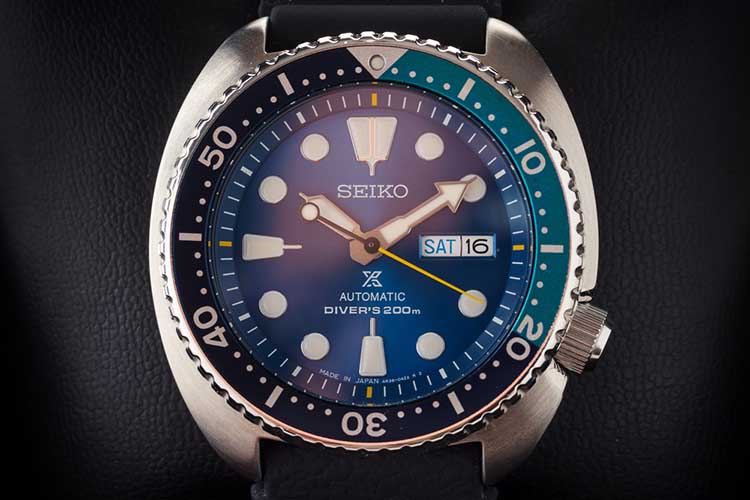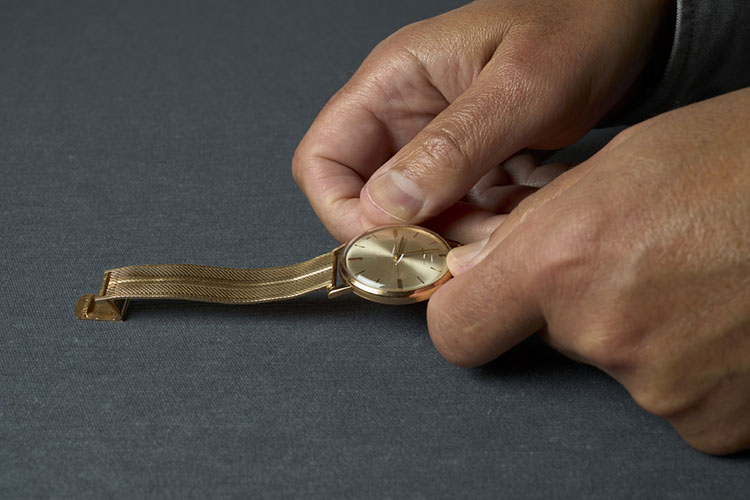If you are new to the world of horology, you may have seen watches with automatic movement and mechanical movement. Most mechanical watches today also host an automatic movement. So, what is an automatic movement and how is it different from a mechanical movement?
In short, an automatic movement is a mechanical movement with a self-winding feature. Unlike a mechanical watch, which requires manual hand-winding of the crown, an automatic watch runs by drawing energy from the wearer’s hand movement.
Introduced first in the late 1700s for the use in pocket watches, the engineering of an automatic watch and its functionality has increased exponentially ever since. In this article, we will answer some frequently asked questions about automatic movements and take a deep dive into understanding how they function.
Read about the different types of watch movements and how they function here!

What is an Automatic Watch Movement?
Simply put, an automatic watch movement winds by itself by drawing energy from the wrist movement of the user. Wearing an automatic watch every day keeps it powered without requiring any manual winding.
Mechanical (hand-wind) watches, on the other hand, require daily hand winding of the crown to keep them in motion. Many mechanical watch brands also recommend winding it at the same time every day. This helps keep the watch as precise and accurate as possible. However, this may not be ideal as it is easy to forget over time. Moreover, the daily manual winding can lead to overwinding of the watch adding to the wear and tear of the movement in itself.
Resultantly, innovation comes at the cost of necessity and quality craftsmanship. Watch engineers introduced the concept of an automatic watch to overcome this small, yet significant, challenge. The idea is to allow you to enjoy your watch without having to worry about winding it manually every day at a particular time. Strap your automatic watch and get to your daily activities to keep the watch powered and in motion.
How does Automatic Winding Work?
Automatic and mechanical watches use similar mechanisms to build up tension at the mainspring. This fully built-up tension when powers the watch as it is released. For a mechanical watch, manually winding the crown builds the tension at the mainspring. For an automatic watch, the kinetic energy generated by the movement of the hands builds the tension to power the watch.
Let’s break this mechanism down further. Every automatic watch comes equipped with a rotor that connects to the “heart” of the watch. This rotor uses strong metals like gold or platinum as ball bearings or weights.

As the hand of the wearer moves, the rotor swings back and forth to take the energy within it. This energy, converted into power reserve, moves the gears and builds the tension at the mainspring. Consequently, setting the hands in motion by merely doing your day-to-day activities.
In a nutshell, the energy generated from swinging your hands keeps the automatic watch running by converting the power to automatically wind the watch. If your automatic watch stops its movement, give it a small shake and it will pop back into the rotation immediately.
Should You Ever Hand Wind an Automatic Watch?

Watch brands and enthusiasts recommend fully winding the watch, turning the crown at least 30-40 times, when you buy an automatic watch. Unboxing the watch and wearing it may not get the watch going at first. Another option is to place it in an automatic watch winder that gently moves the watch back and forth but if you’re in a rush a one-time manual wind is your quickest bet.
After the initial manual winding, the active movement of the wrist is enough to keep the watch functioning. This is contrary to popular belief that automatic watches do not require manual winding. Without the initial manual winding, your automatic watch may never fully charge its power reserve.
An automatic watch, much like a mechanic watch, requires winding to the full power reserve for it to function unhindered. When all the power reserve expends, the watch will require a full winding. And in this case, you may need to hand-wind the watch manually or use a watch winder (see below). Alternatively, if you don’t wear your automatic watch regularly, merely shaking the watch does not always do the trick.
The hand-winding of an automatic watch depends on the brand and the movement. The watchmaker provides these details along with the watch. While there is no straight answer to whether you can hand-wind an automatic movement often – it purely depends on your use and the power reserve. The first recommendation would be simply to wear it to get it moving.
If you worry about damaging the components of the watch by manually overwinding your automatic movement, you can put the concern to rest. Unlike manual watches, an automatic movement comes with a slipping spring which acts as a clutch and prevents overwinding the watch.
This slipping spring glides as your rotate the crown without damaging the mainspring. When you overwind the watch, the mainspring will slip some of this tension, preventing any lasting damage to the piece. You can also hear the smooth glide when you wind by keeping the watch close to your ears.
How Long Does an Automatic Watch Work (stay powered)?

An item of luxury, automatic watches can last forever. To this extent, automatic watches stay in the family for generations. With the right quality craftsmanship, an automatic watch can keep working as long as the wearer wishes. The watch stops only when there is no physical movement and is immediately “brought back to life” by merely wearing the watch and setting its gears in motion. Accordingly, the lifespan of the watch never truly ends.
Automatic watches come with a high power reserve. Once fully wound, watches can have up to 40 plus hours of power. Some brands offer a higher power reserve capacity as well. With regularly wearing of the watch, your hands are constantly in motion, which in turn keeps powering up the reserve. Consequently, the watch will keep working as long as you keep your hands active.
Do Automatic Watches Still Need Batteries?
No, automatic watches, unlike quartz watches, do not need or use batteries. Since these watches use the energy from the hand movement, it does not come equipped with batteries. Nor does the movement use the energy stored in the battery. Rather, the active use of the wrist helps the watch function by storing the energy in the power reserve. Denoted in terms of hours, the power reserve holds energy for a certain duration, making the watch function smoothly. Once the power reserve depletes – wear it, wind it, or place it in a watch winder to bring it back to life.
You may have come across watch brands highlighting features like up to 50 hours or even 80 of power reserve. It is this power reserve that runs the watch and not energy from batteries. The only downside to this is the fact that the watch can stop if not worn regularly. An automatic watch does require being fed with kinetic energy regularly to keep the power reserve full. However, there is also an easy fix to the downside. By shaking the watch or actively using it, you can restore power and get it to move even after long periods of non-function.
Read more about Kinetic watches here, a cousin of both automatic and quartz watches.
Do You Really Need a Watch Winder to Keep an Automatic Wound?

A watch winder is a mechanism where you place your watch in a case. This case rotates from within giving the watch the movement it needs to convert the energy generated into power reserve. A watch winder is useful if you collect watches and have multiple watches that require winding. But, if you own just one automatic watch, consider its pros and cons before investing in one.
Using a watch winder for an automatic watch can go two ways. One, if you don’t regularly wear your automatic watch but need winding to keep it moving, the winder makes this effortless. On the contrary, some watch experts say that if you leave the watch in a winder many believe it can affect the functioning of the watch and increase the wear of the movement.
A watch winder also makes a lot of sense if you own an automatic watch with multiple or complex complications. For example, with a perpetual calendar. Setting the date, day and year manually does take a lot of time. This is when the watch winder comes in handy! But, keep in mind that using a watch winder can increase the wear and tear of your watch movement. For this reason mainly, watch enthusiasts recommend just actively wearing your automatic watch to set it in motion, rather than using a watch winder.